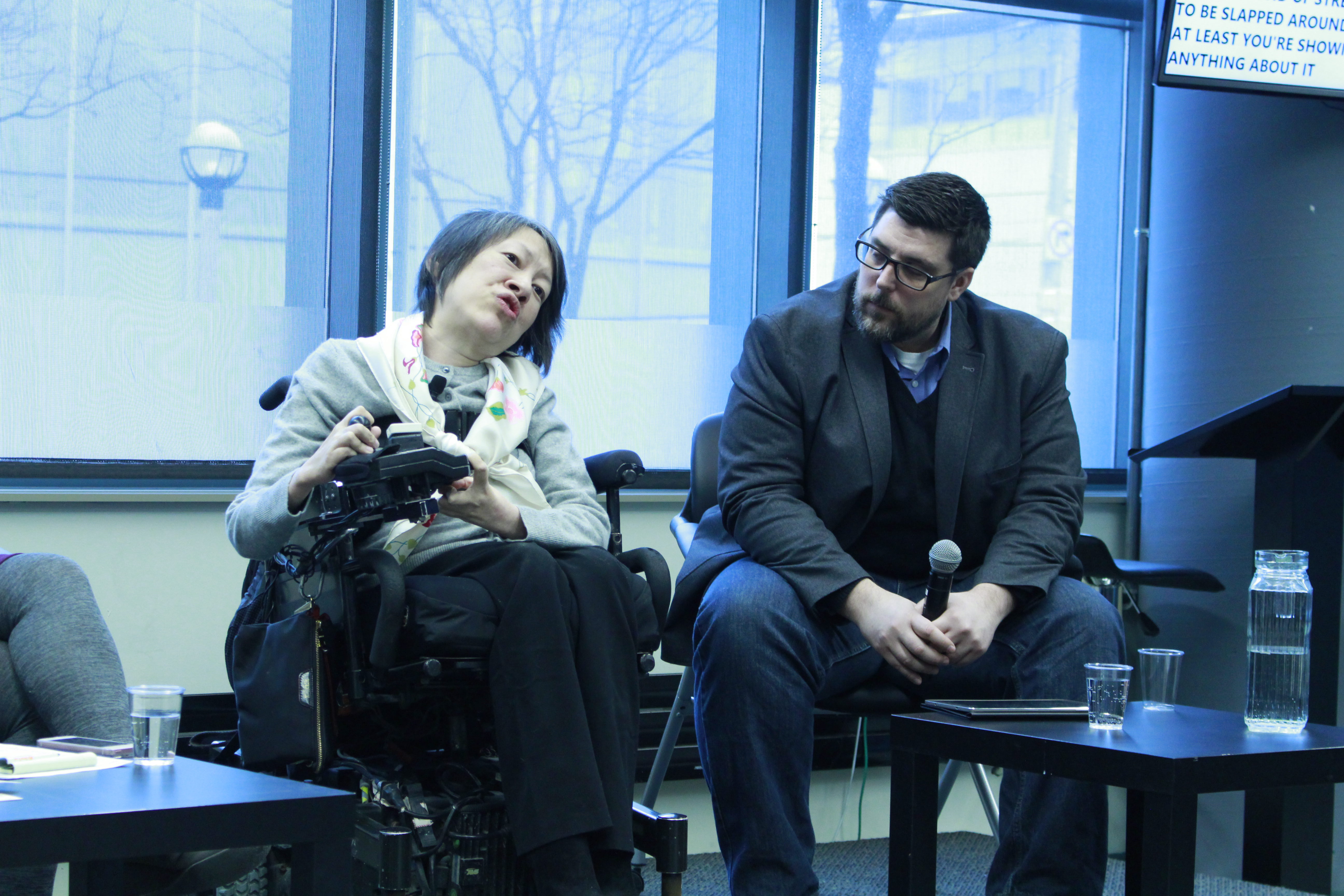Feb. 21, 2018
By RHIANNA JACKSON-KELSO
Special to the RJRC

News coverage of people with disabilities tends to rely on tired clichés that present them as “tragic but brave,” the “supercrip” or the “object of charity,” says a leading disability activist.
Ing Wong-Ward, associate director of Toronto’s Centre for Independent Living, urged able-bodied journalists to abandon the practice of writing “inspiration porn,” a term coined during a 2012 TED Talk by the late disability rights activist Stella Young. Inspiration porn presents people with visible disabilities as being heartwarming or motivational simply for existing. The results, Wong-Ward said during a Feb. 5 discussion at the Ryerson School of Journalism, are stories that are less than newsworthy.
“This whole notion of ‘heartwarming’ – why is it people with disabilities are somehow more heartwarming than others?” asked Wong-Ward, a former CBC producer who was born with spinal muscular atrophy and uses a wheelchair. “It’s a little harder for me to get out of bed than a lot of people, but that’s not an achievement.”
The panel discussion about how journalists can produce better stories about disability was organized by the ReelAbilities Toronto Film Festival, the Ryerson Journalism Research Centre, and Access Ryerson. It was live-streamed (see below) and featured a live transcription to increase viewing accessibility.
An overall theme of the discussion was that that able-bodied journalists know far too little about covering people with disabilities. Journalism education is partly responsible, said panelist Keren Henderson, an assistant professor at the S.I. Newhouse School of Public Communications in Syracuse, N.Y. She said most journalism professors no longer work in the industry and need to catch up with evolving norms.
“[Journalism education] is still quite segregated,” Henderson said when asked about how disability and intersectionality—the theory of how different types of discrimination interact and overlap—are addressed in journalism schools. “We have lists of style guides for different identities, and I don’t see a lot of intersectionality between them in the education system.”
Panelist David M. Perry, a columnist at Pacific Standard Magazine, said continuous updating and education are essential for journalists who write stories about disability: “There are no perfect words,” he said. “Whatever norms we’re learning today will be different in 20 years, and that’s okay.”
Wong-Ward said journalists have no excuse for being uneducated about the topic: “It’s a matter of Googling,” she said. “There’s a little bit of shyness sometimes, particularly in Canada, with disability organizations and media. […] The onus is on journalists to get out there and speak to people with disabilities.”
Perry echoed this sentiment, pointing to the lack of direct quotations from the people most directly affected as a major issue in news coverage. In a sample of 107 news stories about the murder of people with disabilities, Perry said, he found zero quotes from people with the disability.
“The number one thing we can do is diversify our newsrooms and our writers,” Perry said. “But maybe the number two thing—and I’m talking to the students here in particular—if you as a journalist are writing about disability, you should quote people with disabilities.”
Wong-Ward said journalists’ overreliance on expert opinions is one reason people with disabilities are too often excluded from their own narratives.
“If somebody kills their disabled child, [journalists] go to a psychiatrist or a lawyer… without actually talking to people who live with a specific disability,” she said. “By doing that, you end up objectifying people by not including them, and that’s a fundamental problem.
“Can you imagine [writing about] the [Bruce McArthur] murder cases here in Toronto and not talking to gay people?” she added. “Everybody would be up in arms, but somehow it’s acceptable with disability.”
The panelists suggested a variety of strategies for improving coverage. Perry urged journalists to be “a little subversive in your reporting… Instead of emphasizing the ways in which that wheelchair user is unable to do something because their legs don’t work, emphasize the lack of a ramp.”
Wong-Ward encouraged young reporters to think about improving coverage by increasing diversity among reporting staff and the types of stories they produce.
“If [the heartwarming story] is all you’re showing, that’s a problem,” said Wong-Ward.
“Mistakes are made in newsrooms all the time,” she added, and budding journalists should be willing to point out these mistakes when they see them.
“One day you will be in a position of power… Don’t be afraid to speak up.”
(Recording of panel with subtitles to be posted soon)
